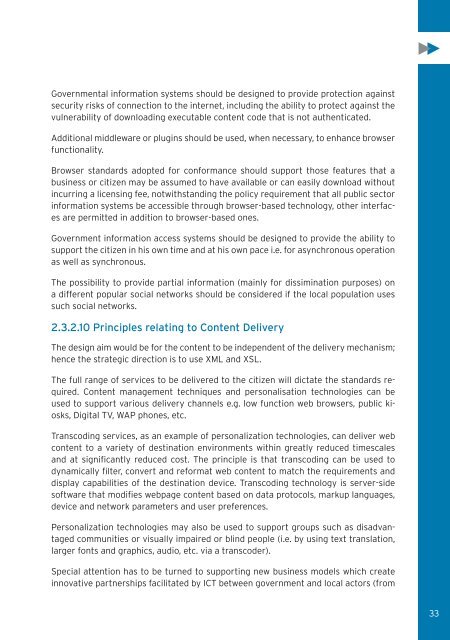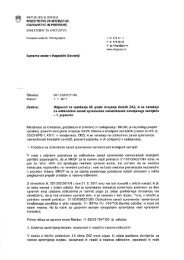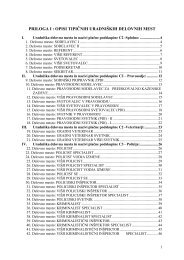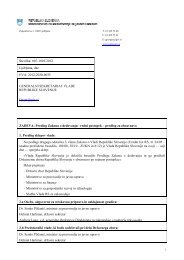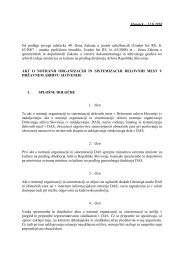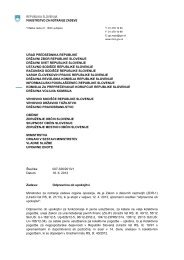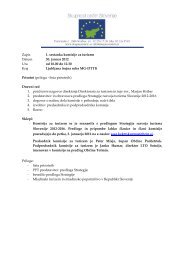for Local Governments
for Local Governments
for Local Governments
Create successful ePaper yourself
Turn your PDF publications into a flip-book with our unique Google optimized e-Paper software.
Governmental in<strong>for</strong>mation systems should be designed to provide protection against<br />
security risks of connection to the internet, including the ability to protect against the<br />
vulnerability of downloading executable content code that is not authenticated.<br />
Additional middleware or plugins should be used, when necessary, to enhance browser<br />
functionality.<br />
Browser standards adopted <strong>for</strong> con<strong>for</strong>mance should support those features that a<br />
business or citizen may be assumed to have available or can easily download without<br />
incurring a licensing fee, notwithstanding the policy requirement that all public sector<br />
in<strong>for</strong>mation systems be accessible through browser-based technology, other interfaces<br />
are permitted in addition to browser-based ones.<br />
Government in<strong>for</strong>mation access systems should be designed to provide the ability to<br />
support the citizen in his own time and at his own pace i.e. <strong>for</strong> asynchronous operation<br />
as well as synchronous.<br />
The possibility to provide partial in<strong>for</strong>mation (mainly <strong>for</strong> dissimination purposes) on<br />
a different popular social networks should be considered if the local population uses<br />
such social networks.<br />
2.3.2.10 Principles relating to Content Delivery<br />
The design aim would be <strong>for</strong> the content to be independent of the delivery mechanism;<br />
hence the strategic direction is to use XML and XSL.<br />
The full range of services to be delivered to the citizen will dictate the standards required.<br />
Content management techniques and personalisation technologies can be<br />
used to support various delivery channels e.g. low function web browsers, public kiosks,<br />
Digital TV, WAP phones, etc.<br />
Transcoding services, as an example of personalization technologies, can deliver web<br />
content to a variety of destination environments within greatly reduced timescales<br />
and at significantly reduced cost. The principle is that transcoding can be used to<br />
dynamically filter, convert and re<strong>for</strong>mat web content to match the requirements and<br />
display capabilities of the destination device. Transcoding technology is server-side<br />
software that modifies webpage content based on data protocols, markup languages,<br />
device and network parameters and user preferences.<br />
Personalization technologies may also be used to support groups such as disadvantaged<br />
communities or visually impaired or blind people (i.e. by using text translation,<br />
larger fonts and graphics, audio, etc. via a transcoder).<br />
Special attention has to be turned to supporting new business models which create<br />
innovative partnerships facilitated by ICT between government and local actors (from<br />
33


